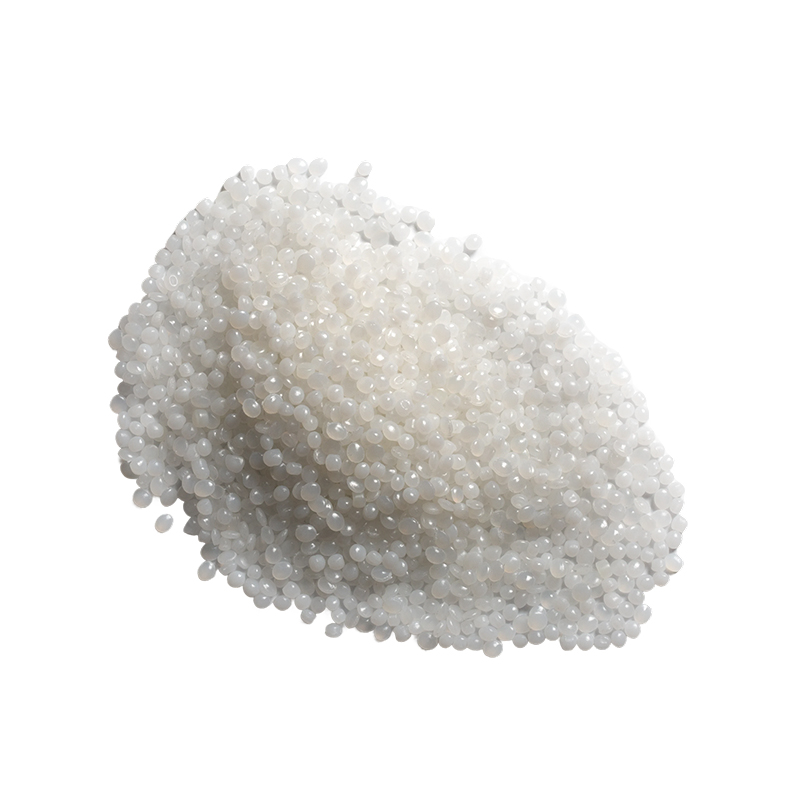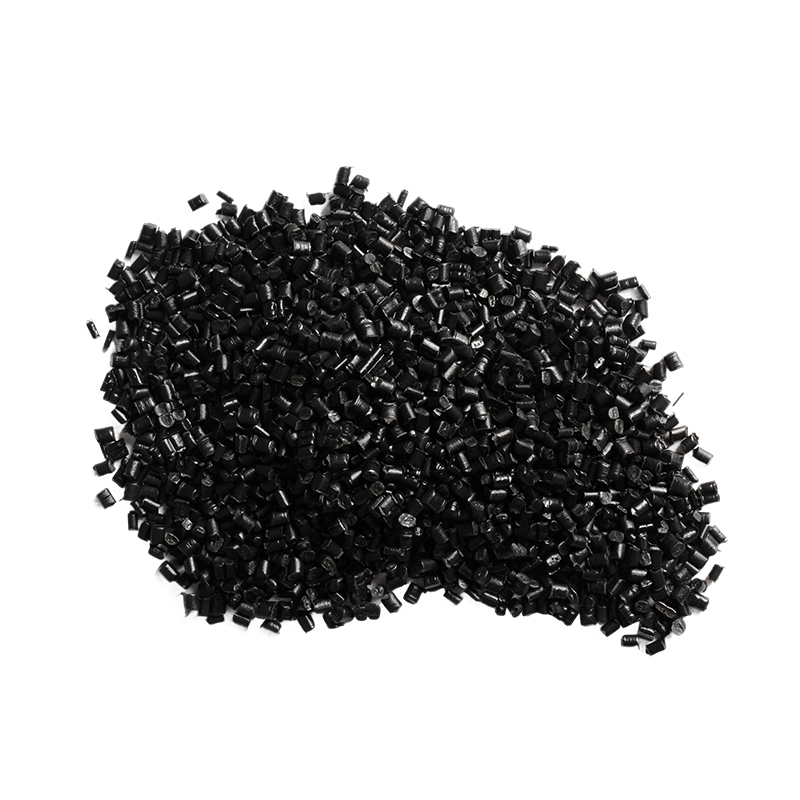How do recycled PE pellets reduce reliance on virgin plastics in response to dual-carbon goals?
Release Time : 2025-11-04
In the global wave of promoting green transformation and sustainable development, the "dual-carbon" goals—namely, carbon peaking and carbon neutrality—have become an unavoidable responsibility and direction for the manufacturing industry. As a fundamental material of modern industry, the environmental impact of plastics production and waste has attracted much attention. How can recycled PE pellets reduce reliance on virgin plastics in response to dual-carbon goals? The answer to this question concerns not only resource recycling but also the low-carbon restructuring of the entire plastics industry chain.
Recycled PE pellets are made from waste polyethylene products—such as agricultural films, packaging bags, bottle caps, and turnover boxes—through processes such as recycling, sorting, washing, crushing, melt extrusion, and granulation. This process essentially reactivates existing plastic resources, giving them renewed processing capabilities and allowing them to return to the production cycle. Every ton of recycled pellets used means one less ton of petroleum feedstock extracted for the production of virgin polyethylene. The manufacture of virgin plastics, from crude oil extraction and cracking to polymerization, involves significant energy consumption and greenhouse gas emissions at every step. Recycled pellets bypass these high-carbon stages, directly entering downstream product manufacturing as "secondary raw materials," significantly reducing the carbon footprint throughout the entire lifecycle.
More importantly, the widespread use of PE recycled pellets is driving a shift "from a linear economy to a circular economy." The traditional model is "production-use-disposal," with plastics ultimately ending up in landfills or the natural environment, wasting resources and potentially causing soil and water pollution. The recycled pellet system, however, constructs a closed-loop path of "recycling-regeneration-remanufacturing," making waste plastic no longer the end point but the starting point for new products. This model not only reduces the extraction of virgin resources but also alleviates end-of-life treatment pressure, suppressing plastic pollution at its source.
On the manufacturing side, more and more plastic product companies are incorporating a certain proportion of high-quality PE recycled pellets into their formulations. These pellets undergo rigorous sorting and purification, resulting in fewer impurities and stable performance, meeting the needs of products with moderate mechanical performance requirements, such as garbage bags, agricultural films, pipe fittings, and daily containers. Through scientific formulation, companies can maintain basic product performance while effectively reducing raw material costs, simultaneously conveying environmental value to customers. Especially with international brands demanding a higher proportion of recycled materials in their supply chains, recycled pellets have become a key vehicle for companies to meet ESG (Environmental, Social, and Governance) standards.
Furthermore, the recycled pellet industry itself is undergoing continuous green upgrades. Advanced cleaning technologies reduce water and chemical emissions, efficient melting systems lower energy consumption, and intelligent sorting improves purity and efficiency. The entire recycling process is evolving towards low pollution, low energy consumption, and high added value, further amplifying its carbon reduction benefits.
From a societal perspective, the widespread application of PE recycled pellets has also driven the improvement of the recycling system and the creation of employment opportunities. From community recycling points to professional sorting centers and recycling plants, a green industrial chain is taking shape. Public environmental awareness is also being activated—every instance of correctly disposing of plastic waste can potentially become the raw material for a new product, creating a positive incentive.
Of course, recycled pellets are not a panacea. Their quality highly depends on the purity of the upstream recycling and the control level of the downstream processes. Only by adhering to high recycling standards can we truly achieve "replacing waste with new" without sacrificing performance and safety. However, with coordinated efforts across the entire industry chain, PE recycled pellets are fully capable of significantly reducing reliance on virgin plastics while ensuring supply.
In conclusion, PE recycled pellets, through resource reuse, process decarbonization, and industrial circularity, represent a crucial practical path to achieving dual carbon targets. It is not merely a "rebirth" of plastics, but a solid step forward for manufacturing towards a green future. Behind every recycled pellet lies a cherishing of Earth's resources, restraint in carbon emissions, and a solemn commitment to a sustainable future.
Recycled PE pellets are made from waste polyethylene products—such as agricultural films, packaging bags, bottle caps, and turnover boxes—through processes such as recycling, sorting, washing, crushing, melt extrusion, and granulation. This process essentially reactivates existing plastic resources, giving them renewed processing capabilities and allowing them to return to the production cycle. Every ton of recycled pellets used means one less ton of petroleum feedstock extracted for the production of virgin polyethylene. The manufacture of virgin plastics, from crude oil extraction and cracking to polymerization, involves significant energy consumption and greenhouse gas emissions at every step. Recycled pellets bypass these high-carbon stages, directly entering downstream product manufacturing as "secondary raw materials," significantly reducing the carbon footprint throughout the entire lifecycle.
More importantly, the widespread use of PE recycled pellets is driving a shift "from a linear economy to a circular economy." The traditional model is "production-use-disposal," with plastics ultimately ending up in landfills or the natural environment, wasting resources and potentially causing soil and water pollution. The recycled pellet system, however, constructs a closed-loop path of "recycling-regeneration-remanufacturing," making waste plastic no longer the end point but the starting point for new products. This model not only reduces the extraction of virgin resources but also alleviates end-of-life treatment pressure, suppressing plastic pollution at its source.
On the manufacturing side, more and more plastic product companies are incorporating a certain proportion of high-quality PE recycled pellets into their formulations. These pellets undergo rigorous sorting and purification, resulting in fewer impurities and stable performance, meeting the needs of products with moderate mechanical performance requirements, such as garbage bags, agricultural films, pipe fittings, and daily containers. Through scientific formulation, companies can maintain basic product performance while effectively reducing raw material costs, simultaneously conveying environmental value to customers. Especially with international brands demanding a higher proportion of recycled materials in their supply chains, recycled pellets have become a key vehicle for companies to meet ESG (Environmental, Social, and Governance) standards.
Furthermore, the recycled pellet industry itself is undergoing continuous green upgrades. Advanced cleaning technologies reduce water and chemical emissions, efficient melting systems lower energy consumption, and intelligent sorting improves purity and efficiency. The entire recycling process is evolving towards low pollution, low energy consumption, and high added value, further amplifying its carbon reduction benefits.
From a societal perspective, the widespread application of PE recycled pellets has also driven the improvement of the recycling system and the creation of employment opportunities. From community recycling points to professional sorting centers and recycling plants, a green industrial chain is taking shape. Public environmental awareness is also being activated—every instance of correctly disposing of plastic waste can potentially become the raw material for a new product, creating a positive incentive.
Of course, recycled pellets are not a panacea. Their quality highly depends on the purity of the upstream recycling and the control level of the downstream processes. Only by adhering to high recycling standards can we truly achieve "replacing waste with new" without sacrificing performance and safety. However, with coordinated efforts across the entire industry chain, PE recycled pellets are fully capable of significantly reducing reliance on virgin plastics while ensuring supply.
In conclusion, PE recycled pellets, through resource reuse, process decarbonization, and industrial circularity, represent a crucial practical path to achieving dual carbon targets. It is not merely a "rebirth" of plastics, but a solid step forward for manufacturing towards a green future. Behind every recycled pellet lies a cherishing of Earth's resources, restraint in carbon emissions, and a solemn commitment to a sustainable future.







